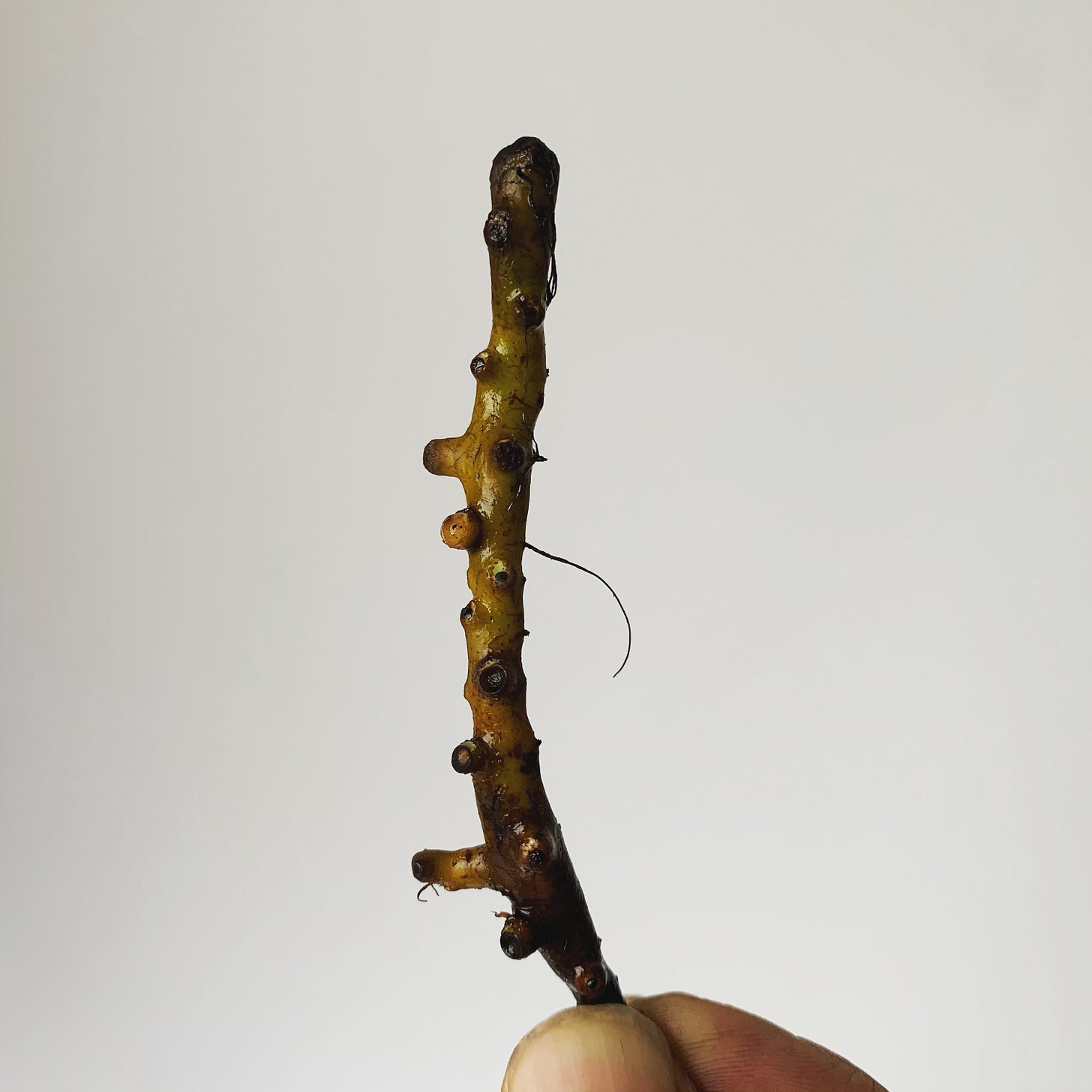
The Year in Review
Inspired by Spotify, and of all the other corporations cashing in on our urge to look back and make lists and somehow wrap up the year, or maybe just because I didn’t know what to tell you, and I was worrying a bit that I may have overshared last week anyway for whatever reason I was starting to put tother a top ten list list for you from all the colours that I wrote about in 2022 and it felt a little flat, and I felt a little flat, and then I began a series and I closed my laptop because finally paper and ideas and ingredients were coming together in a way that was starting to meet my mood. And by this morning (its Saturday, my newsletter is late) I had a whole series of inktests and I thought maybe I could explain to you, and in a way to myself, what an inktest is for me by explaining how all these little squares of paper ended up on my kitchen table feeling so unexpectedly right to me.

Beginnings
I think it started a couple of nights ago when I had a beer with Frank, a guy I hadn’t seen in ten years but who it looks like I’ll be working with on a kind of exciting collaborative project next year. As well as discussing the “Secret Project” Frank told me about a particular colour of purple from a particular moment in his life that has kind of bubbled back up to the surface. I don’t want to give too much away because I’m hoping to interview Frank for an upcoming newsletter and also because it’s his purple, but for now I will just say that he reminded me of some earlier experiments I had been doing to brew up and stabilize an extremely dark plum ink colour. A colour so close to black that it didn’t really have a name. Years ago when I was developing my recipe, the ink kind of cracked up like drying mud or a heavily shellacked old Dutch master painting, and I liked way that the texture and the slight undertones of purplish prune complimented each other but I wasn’t sure I had a marketable ink. That time, I was trying to make a colour that I was calling liquorice: black, silky and rich with almost subliminal tones. And as I was saying liquorice to myself, I was thinking of Maggie Fost. Maggie is one of those friends who even if you haven’t spoken in years will offer up her car-top carrier when you need it for camping. She was once the longtime art director at the grunge era indy-iconic Merge Records and is now running a division of Shopify. She was also one of the earliest supporters of the Toronto Ink Company. Back in 2015 Maggie sent me the following message:
Jason,
Last night, I found myself in conversation with a young guy from Syria. I asked him about his family and he told me that they had been in the liquorice business until they had to leave Syria a few years ago. “Like candy?” I asked, naively. No, the root. He told me his father - a mechanical engineer - developed the first machine capable of peeling liquorice root, which is difficult because it’s sticky. His production facility peeled it, dried it, and exported it. In fact, they are the only family in Syria officially allowed to export liquorice root, based on the strange carving up and control of trades from decades ago. They sell it mainly to the French, who use it for Absinthe and another ouzo-like liqueur.
I immediately thought of you. I told him about your project and asked him if he could get me any amount of Syrian liquorice root. I suggested it could be a very meaningful bottle of ink right now. “No,” he said. “But I can get you some from Armenia.” This is where his father (now living in Montreal) is trying to establish business since Syria is no longer viable.
Liquorice is harvested from the wild, can’t be farmed. Supposedly Syrian liquorice is the best in the world.
Anyway, I have no Syrian liquorice root for you, but instead this story. Still totally in love with your project as it is—and its “legs.”
Maggie got what I was up to maybe even before I fully understood it. I worked with her and a few other friends on a proposal involving abandoned rail tracks for the US National Parks Service. Our proposal never really panned out but liquorice stayed on my mind. So last night I was thinking of Frank and Maggie and something gummy and not-quite black and ropey shiny, and I couldn’t stop myself from playing in the kitchen a bit with what I had on hand.

Ingredients
I had a jar of fermented and then dried wild grape skins left over from a project for Mitosaya a botanical distiller in Japan, and some blueish toned oak gall ink (oak galls from my neighbour’s house just down the street, mixed with iron salts from (I have to admit) the internet. This along with quite a lot of gum arabic, well mixed, gave me a shiny paint-like cool-black ink. Each one of these ingredients has a backstory but I want to tell you how I tested the colour, how it became the series above.
Keep reading with a 7-day free trial
Subscribe to The Colour | Newsletter | Lab | Community to keep reading this post and get 7 days of free access to the full post archives.




